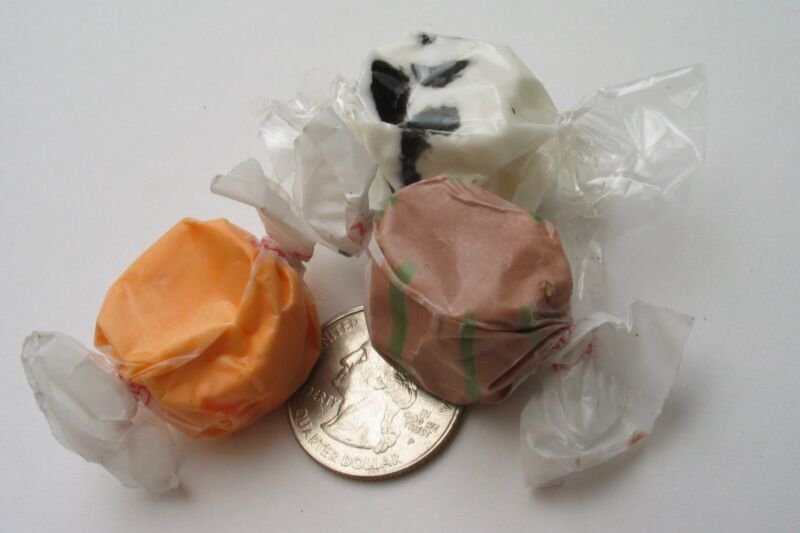The physics of saltwater taffy

Enlarge / Saltwater taffy is made by stretching and pulling the sticky candy base to create air bubbles for a fluffy and chewy confection. (credit: Wikimedia/CC BY-SA 3.0)
When San To Chan successfully defended their PhD thesis, they received a gift of saltwater taffy to celebrate and couldn't help being intrigued by the taffy's unusual consistency: somewhere between a solid and liquid. That led to experiments investigating the taffy's rheology-how it deforms in response to applied forces-and how the ingredients and taffy-making process contribute to that rheology. The results are described in a new paper published in the journal Physics of Fluids.
Taffy is a viscoelastic material-it has properties between a viscous liquid and an elastic solid," said Chan, now a postdoc in the Fluid Interfaces Group at MIT Media Lab. "Comparing the deformation behavior of commercial taffy to those of different lab-made sugar syrups and lab-made taffies allowed us to identify the most important taffy ingredient (and material structure) that governs taffy rheology."
It's just the latest example of a burgeoning area of research focusing on the science of food-something that's frequently on the menu here at Ars. For instance, in 2020, physicists examined the physics of wok-tossed fried rice and found that the secret to a perfect dish (i.e., nicely browned but not burnt) was a timely combination of side-to-side and see-sawing motions while cooking. In 2022, MIT physicists coined the term "oreology" for their study of why-when twisting two Oreo cookie halves apart-the creme filling typically sticks to only one chocolate wafer.